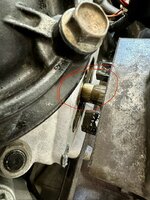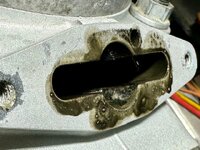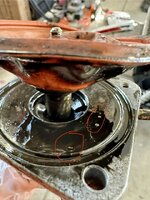T
Troutfrea
New member
Greetings,
I think the title is self exlpanatory. Bottom line; I noticed the oil on my PTO side power valve seems slightly milky. Not bad but it does seem different than the mag side. What do you all think? Should I be concerned? Do you think it’s an o-ring? Something else? I really am over this sled giving me issues. This is for a 2012 rmk 600
This is for a 2012 rmk 600
More detail… I just rebuilt this motor and it has 70 or so miles on it. It shutdown when my daughter was on it over new years. It wasn’t hot (around 130). The motor didn’t want to spin initially but broke loose and my buddies mixed oil in the fuel and dumped oil in the cylinders ( I wasnt there) and she was able to ride it home. It still has 90 pounds in each cylinder so I’m hopeful the motor is okay. Just need to understand what is up with this cylinder.
Separately, I need to figure out why the motor seems to be starving for oil. I’ll start a separate thread for that if I can’t find anything.
Thanks in advance for your help!



I think the title is self exlpanatory. Bottom line; I noticed the oil on my PTO side power valve seems slightly milky. Not bad but it does seem different than the mag side. What do you all think? Should I be concerned? Do you think it’s an o-ring? Something else? I really am over this sled giving me issues.
More detail… I just rebuilt this motor and it has 70 or so miles on it. It shutdown when my daughter was on it over new years. It wasn’t hot (around 130). The motor didn’t want to spin initially but broke loose and my buddies mixed oil in the fuel and dumped oil in the cylinders ( I wasnt there) and she was able to ride it home. It still has 90 pounds in each cylinder so I’m hopeful the motor is okay. Just need to understand what is up with this cylinder.
Separately, I need to figure out why the motor seems to be starving for oil. I’ll start a separate thread for that if I can’t find anything.
Thanks in advance for your help!




